- News
- Reviews
- Bikes
- Components
- Bar tape & grips
- Bottom brackets
- Brake & gear cables
- Brake & STI levers
- Brake pads & spares
- Brakes
- Cassettes & freewheels
- Chains
- Chainsets & chainrings
- Derailleurs - front
- Derailleurs - rear
- Forks
- Gear levers & shifters
- Groupsets
- Handlebars & extensions
- Headsets
- Hubs
- Inner tubes
- Pedals
- Quick releases & skewers
- Saddles
- Seatposts
- Stems
- Wheels
- Tyres
- Tubeless valves
- Accessories
- Accessories - misc
- Computer mounts
- Bags
- Bar ends
- Bike bags & cases
- Bottle cages
- Bottles
- Cameras
- Car racks
- Child seats
- Computers
- Glasses
- GPS units
- Helmets
- Lights - front
- Lights - rear
- Lights - sets
- Locks
- Mirrors
- Mudguards
- Racks
- Pumps & CO2 inflators
- Puncture kits
- Reflectives
- Smart watches
- Stands and racks
- Trailers
- Clothing
- Health, fitness and nutrition
- Tools and workshop
- Miscellaneous
- Buyers Guides
- Features
- Forum
- Recommends
- Podcast
feature
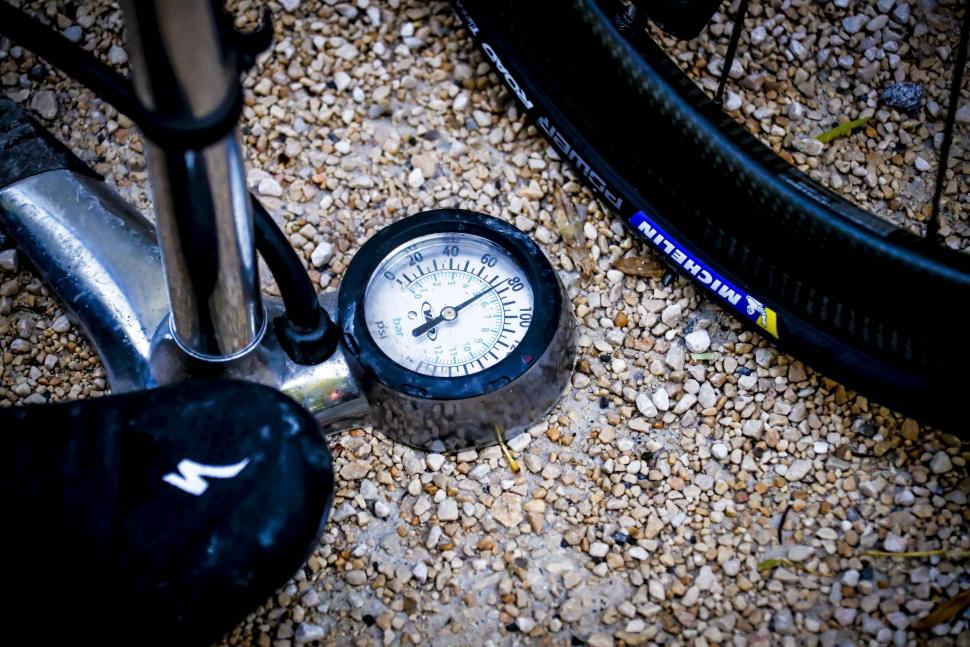 michelin power road first ride40
michelin power road first ride40How do you choose the right tubeless tyre pressure?
We’ve covered how to choose your tyre pressure elsewhere but in this article we’re looking specifically at tubeless tyre pressures. One of the benefits you often read about with tubeless tyres is the ability to run a lower pressure for more comfort. But how low can you go and what’s the right pressure for your setup?
Why lower pressures?
Along with reduced punctures, one of the benefits of removing the inner tubes and replacing with liquid sealant is the lower pressures that can be used without negatively impacting performance.
“Tubeless tyres can be used with lower inflation pressure without compromising performance. That brings clear advantages in comfort as well as more control in critical situations and poor road/trail conditions,” explains Schwalbe.
Hunt concurs with this recommendation and as well as reduced punctures, more comfort, and also points to reduced rolling resistance being another benefit.
“Alongside the ability to seal punctures, it’s the biggest reason to consider giving tubeless a go. Without a soft inner tube, the chance of pinch flats/‘snakebite’ punctures is much lower. When an object like a rock or pothole completely flattens the tyre against the rim, a reinforced tubeless tyre sidewall is much less likely to be damaged than a butyl inner tube, explains Brand Manager Ollie Gray.
“Once you can run lower pressures without an increased risk of punctures, then you can get all the benefits that come with that: the obvious ones being increased comfort, better grip from a larger contact patch, but also reduced rolling resistance. The rolling resistance reduction is interesting, and a little counterintuitive; with a higher pressure the tyre can’t deform as much over small bumps in the road and the wheel, bike and rider are all bounced up over the object. You don’t get that energy back when you come down the other side, instead as the rider you are working to absorb that vibration.”
There are lots of variables you also need to consider. You need to take into account the rider weight, the bike weight, the quality of the roads and whether they’re rough or smooth, weather conditions also play a part as well and generally wet roads demand lower pressures. Even different tyres and their construction can make a difference, some tyres are soft and supple, others have very stiff sidewalls, and these changes can affect the ideal tyre pressure.
You can’t go too low of course, because the tubeless tyre needs a certain amount of air to keep it mounted onto the rim. Too low could be asking for trouble. Equally, go too high could also be inviting trouble as the tyre could blow off the rim. There’s a sweet spot between the two extremes which you want to aim for. Hunt advises against going above 100 psi with 25-28mm tyres, 70 psi for a 30mm tyre, and 35 psi for over 46mm wide tyres.
You don’t want to go too low either because the tyre could collapse under load in corners and squirm horribly. It also increases the risk of slamming the rim into the ground and damaging the tyre.
US tyre brand Compass points out that an excessively flexing tyre can damage the casing: “You also don’t want to run too low a pressure with tubeless tyres. If the tyre flexes excessively, this will break down the casing until it starts to leak. With a narrow tyre, you have a narrow window between “too high” and “too low” pressures,” says the company.
How do you choose the right pressure?
We’ve established there are benefits to lower pressures as one of the reasons to adopt tubeless, but as with regular tyre pressure, it can seem a bit of a dark art to know what is the optimum pressure for your setup. As ever, there are many variables that dictate the ideal pressure, from rider and bike weight, road surface conditions, rim width and more.
“Width and rider weight are key factors along with the road surface and riding style. The rougher the riding surface, the bigger the benefits of using lower pressures (and also wider tyres). If a surface is wet or loose then the extra grip from a lower pressure is a big benefit too. In all honesty, there are a lot of variables,” suggests Hunt’s Ollie Gray.
Rim width and tyre width is an important relationship in the equation too. “When considering pressure riders will need to think of the wheel and tyre as a system opposed to individual parts. A wider rim will help support a tyre better, so can allow lower pressures than the same tyre on a narrower rim. As the tyre gets wider, the pressure should also decrease accordingly,” adds Hunt.
Experimenting with tyre pressures is often a good tactic. Invest in a good pressure gauge and pump and don’t be afraid to try different pressures. Make notes of the pressures as you try them and record your findings on how the bike feels on your local roads. Does it feel smooth, rough, slow, fast, squirmy, bouncy?
“As a good way to test what works for you, start off checking the recommended pressure ratings on your tyre and start somewhere in the middle. The signs that the pressure is too low are ‘bottoming out’ the tyre or getting excessive lateral movement from the tyre in cornering – so reduce your pressure until you start to get bottom outs or tyre squirm, then increase it by a little until it feels good again. By then you probably have the best balance of comfort, speed and grip,” suggests Hunt’s Ollie Gray.
So what is the right pressure then?
An obvious starting place is the tyre pressure stamped on the sidewall of the tyre. Thankfully, long gone are the days when people used to just use the max tyre pressure as the go-to pressure for riding. Many tyres now have a range of real-world pressures that offer a much better starting place to experiment from.
Continental has developed its first road tubeless tyre this year, the GP5000 TL, so we asked them what they recommend for tyre pressures.
“The first indicator is always the tyre’s individual pressure range, depending on the respective constructions. In fact we even do test the tyres with the double amount of pressure before they are finally released,” explains Continental’s head of marketing Sarah Hohmann-Spohr.
“Depending on the system weight (rider, bike) and underground/conditions the riders can opt between the min/max range. This range we communicate on the tyre’s sidewall, in our current programme/catalogue/website etc.”
For its new tubeless tyres, Continental recommends, for a 25m width tyre, between 80-109psi, compared to 95-123psi for the tubed clincher tyre. So you can see the tyre pressure is much lower than with an inner tube but it offers a 29psi range to allow for the aforementioned variables like rider/bike weight, riding style and road conditions.
Another good starting place is Frank Berto’s recommendation to choose a tyre pressure that involves a tyre being compressed 15% of its height under the rider’s weight. Heres a handy chart to make it a little easier:
What this chart doesn’t take into account is tubeless. “Generally on the road, we’d recommend 8-10psi difference compared to current pressures as a starting point,” recommends Hunt, so you can take 10psi off the recommended pressure on Berto’s chart above.
Hunt offers a list of recommended pressures on its website for both clincher and tubeless tyres, based on 60, 70 80 and 90kg rider weights and 23, 25 and 28mm widths. Taking a 70kg rider on 28mm tyres, it recommends 86 psi front and 91 psi rear.
Is there an app to make it really easy?
Yes, there are now several smartphone apps that take the guesswork out of determining your ideal tyre pressure. I’ve been trying out two from TyreWiz and Michelin.
TyreWiz is a clever tyre pressure sensor developed by Quarq (part of SRAM) that attaches to the valve and monitors the pressure inside the tyre, sending this information to the app.
However, the app also lets you use it without the expensive sensor. You can input all your key data - rider weight, bike weight, wheel and tyre size - and it recommends front and rear pressures. I’ve been using it for a little while now and the numbers it recommends are pretty good, close to what I would normally use based on lots of tyre testing and experimenting.
Mavic also produces a tyre pressure app called MyMavic. In it you can input your vital data, even choosing rim width as that’s an important consideration in the relationship between tyre and wheel, and it produces a good set of numbers that I have not hesitated to use on my bike.
Here are screenshots from both apps, using the same set of numbers. The results are extremely close.
Summary
In conclusion, there is no real secret answer to what the best tubeless tyre pressure is, but it’s clear from speaking to industry experts that it’s lower than a regular clincher setup with inner tubes.
Don’t be afraid to experiment, tyre pressure makes a big difference to how the bike rides and feels on the road, so it’s worth making some changes and noting down the differences. Invest in a good pressure gauge or track pump and see what pressure works for your setup and riding requirements. It’s worth the effort.
Remember that tyre pressure isn’t a set and forget a thing, especially with tubeless which can be more prone to leaking air over time, so you want to regularly check the pressure and adjust it to suit different conditions. Don’t just assume they’ll be okay.
Over to you now, how do you choose the tyre pressures and what pressures are you running in your tyres?
David worked on the road.cc tech team from 2012-2020. Previously he was editor of Bikemagic.com and before that staff writer at RCUK. He's a seasoned cyclist of all disciplines, from road to mountain biking, touring to cyclo-cross, he only wishes he had time to ride them all. He's mildly competitive, though he'll never admit it, and is a frequent road racer but is too lazy to do really well. He currently resides in the Cotswolds, and you can now find him over on his own YouTube channel David Arthur - Just Ride Bikes.
Latest Comments
- Secret_squirrel 4 hours 51 min ago
Um...no. Spitting is grim and there is never any excuse.
- Another_MAMIL 7 hours 47 min ago
Q36.5 Gregarius Essential Bib Knickers fit the bill: 3/4 length bib tights for warm weather.
- Rendel Harris 7 hours 58 min ago
Jolly good. Only it hasn't been and it is still a public bridleway. Feel free to look it up.
- jaymack 8 hours 48 min ago
"...it feels more like a £100+ jersey". It's almost as if cycling apparel is over priced.
- mike the bike 10 hours 39 sec ago
I've had a few Lezyne bits and bobs over the years and while it's true I've never bothered to return anything under warranty, I've had a couple of...
- mark1a 9 hours 3 min ago
There's a transition period. For the benefit in kind (BIK) tax to the employee, it will be treated as a goods vehicle as it is now (rather than a...
- hawkinspeter 10 hours 12 min ago
Parents say East Bristol Liveable Neighbourhood makes roads '100 times safer' for children:...
- mdavidford 10 hours 18 min ago
Isn't basically all carbon recycled? From stars?
- velodinho 11 hours 34 min ago
As witnessed at so many infrastructure improvement projects similar to this one, all those who object should ignore the consultation and pray at...
- Nagai74 13 hours 22 min ago
It's a DLO to those in the trade.

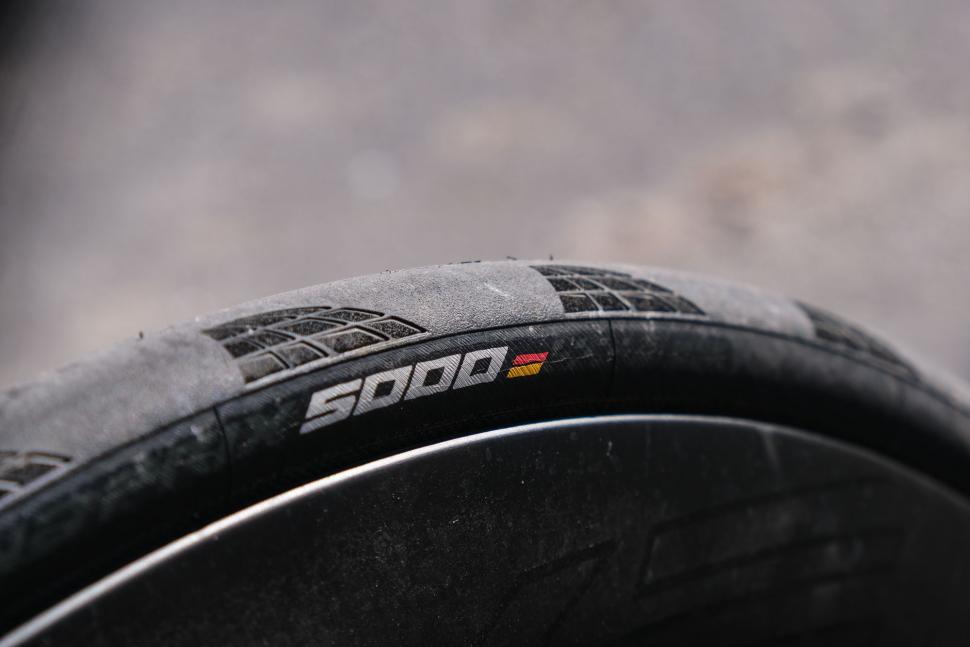
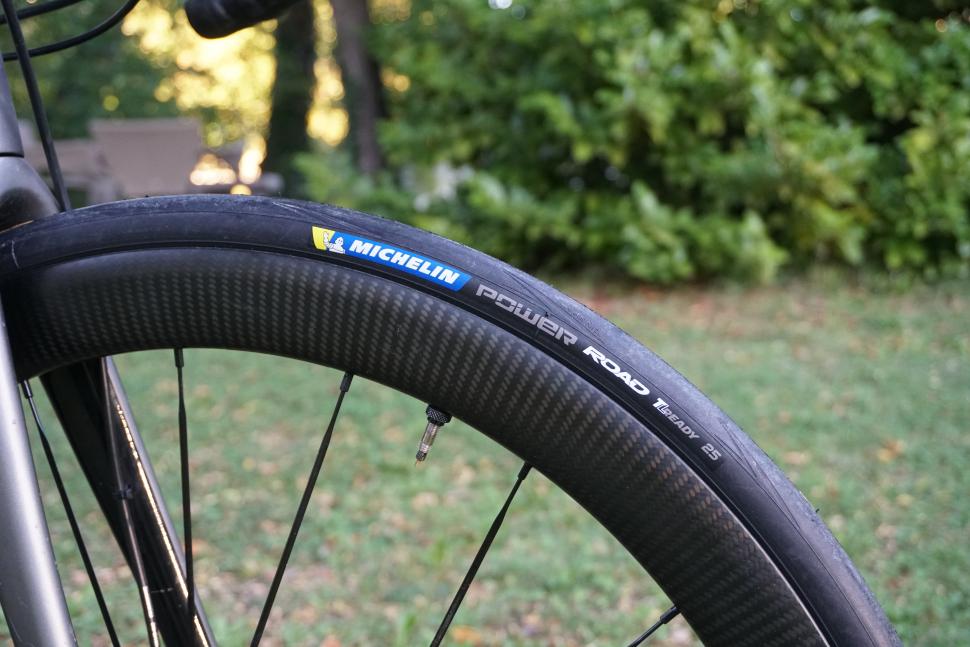
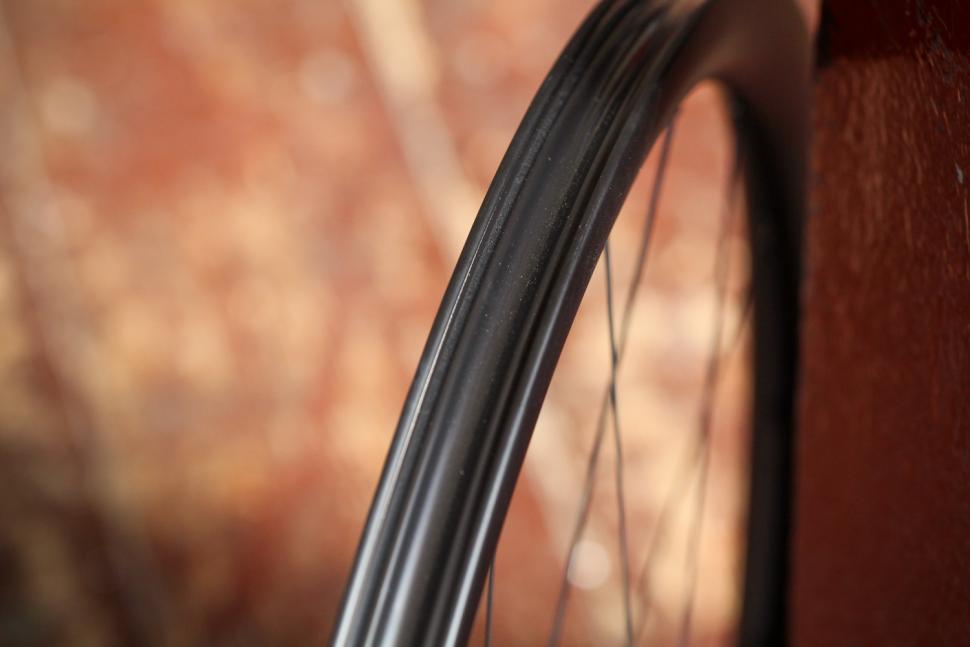
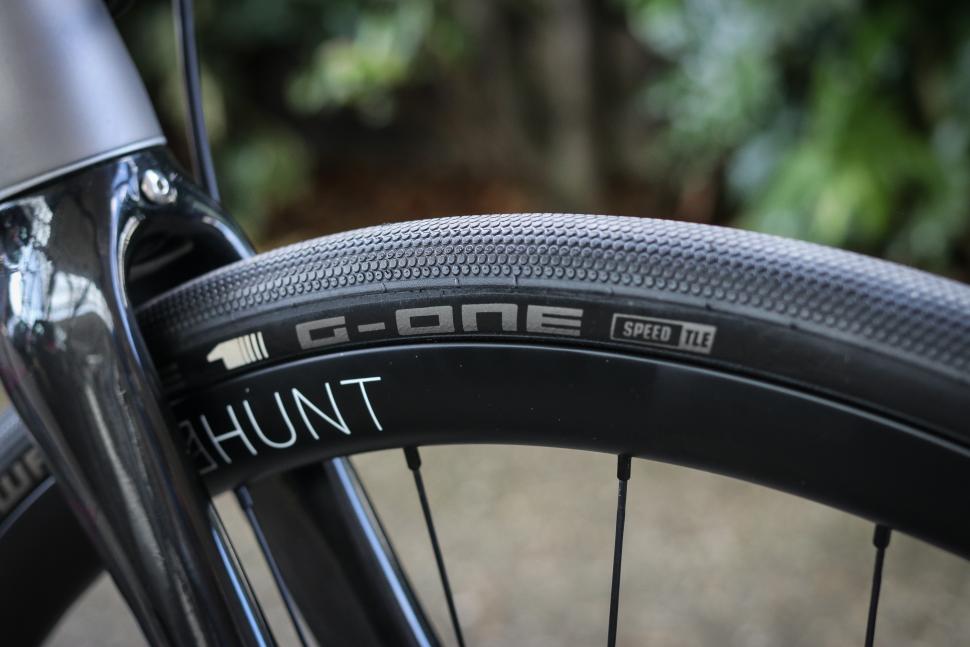
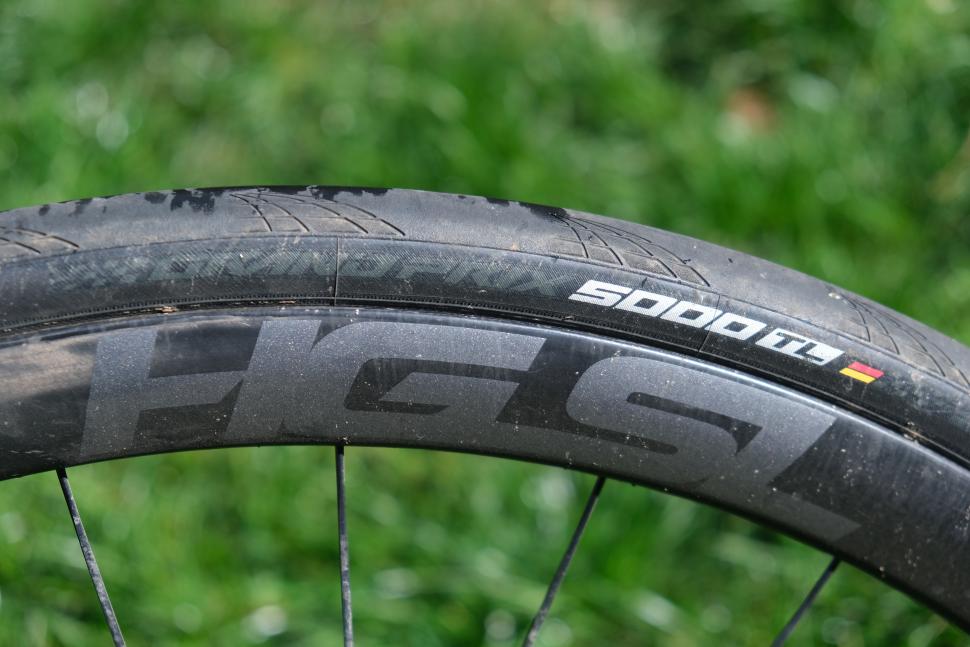

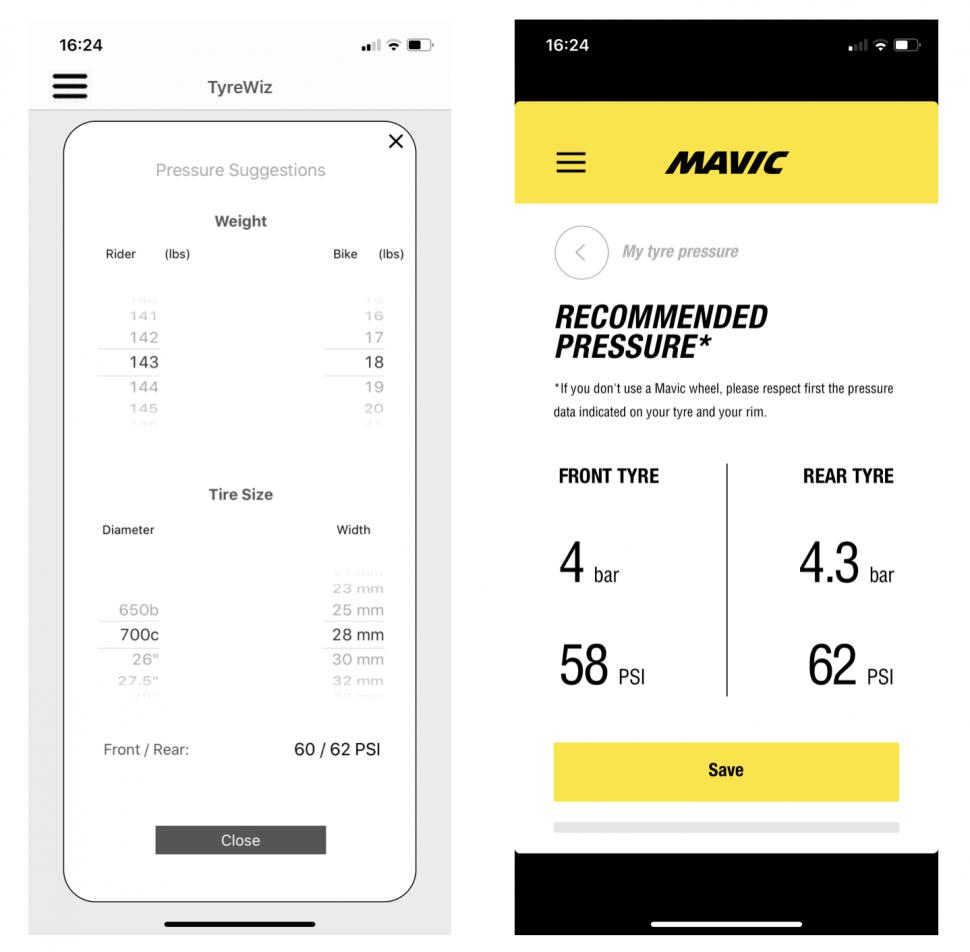
Add new comment
21 comments
Interesting input from Schwalbe. Most apps and graphs on this see me needing about 2.7 or 2.8 bar on my G-One Allround 700x38c rubber. That feels right too. If I then reduce for going tubeless, what happens to Schwalbe's min pressure spec on the sidewall of 3 bar? Following their spec limits, it seems that one of the most common gravel tyres needs to be run at min 3 bar for the sidewall not to shred or deform. That would leave me needing to either go skinnier, or switch to another tyre
I've had good luck with the SILCA Professionial Pressure Calculator. Check it out.
https://info.silca.cc/silca-professional-pressure-calculator
Another one from SRAM, but you don't need to register to use this one
https://axs.sram.com/guides/tire/pressure
Thanks.
Just plugged in some rough figures and it's come up with around 60psi for me which is more or less what I've been using with 28mm tyres.
With a system weight of 80 kgs, i ride tubeless with the Continental GP5000 28, with 70 psi. When we do a high speed group ride, I go to 80 psi. On those bad roads we ride, one does not bounce from here to there with lower tire pressures. And it rolls as good as with 100 psi or more.
Its been a long time since ive read such BULL about tyres/preasures., ever since some prat invented the word gravel, wider tyres, better aero benifits, bull, even techs say they feel the drag of wider tyres, better rolling resistans on wider, lower preasure tyres, revewers even say, 23-25 with 120-150psi is the best, better puncture resistance, maybe, less weight with out inner tube, then squert heavy fluid inside, so should a problem happen, you get covered in the stuff, ill stick, maybe you,d like to argue about equipment wear with 1+ cross chaining ???
Tony, I reckon the entire tubeless zeitgeist is pure BS. I have yet to see even a tiny puncture, where sealant spurts visibly, seal up like it says in the rhetoric. I have seen tubes fitted by guys with hands and rims coated in goo just so they can continue riding. When enve launched the tubeless only rim I wrote to tell them they had lost my custom for ever. It is my 100% opinion that tubeless is for guys with a support vehicle.
I've had a number of punctures where the sealant has worked on both on and off road rides. Just as per the design. It works. only one failure where a tube was needed and that was a substantial cut that would have stopped any tyre. Been running tubeless for over 20000miles now.
i've also had to wait on countless group rides while other people swap a tube out. That is always a pleasure.
Even my wheelbarrow came set up tubeless...and i'm not kidding.
150psi ?? What are your roads like ?
Must be like riding on a snooker table.
As the article says, there really is no magic formula. You have to use a bit of common sense - too hard and they feel like shit, too soft and they feel the same. You need a bit of give but also they need to feel fast (i say this in specific regard to road. If its cx, xc or trail, then go low, fill your boots).
I don't know about dangerous, but if you run too low a pressure, and I have been going very low on my new 3 inch tyres, you can see signs of the threads in the sidewall breaking, which means that the sidewall will probably give out before I wear out the tread. It's happened before on a 2.1 knobbly I had. Means that i should put in a couple more psi in there. Though the low pressures made the bike ride marvellous. 10 was a bit too low, made the rear a bit too bouncy. 11 was very good, though it seems damaging.
The Berto chart says that i should be running pressures which are lower than the lowest recommendation written on the tyre wall. Wouldn't it be dangerous to use lower pressures than on the tyrewall?
I'm about 51-54kg and by bike is 7.64kg. I use tubeless 25c tyres, pump up to 85psi and let them deflate from there. Bike shop guy said I could go 70-80psi I think.
That app said I could go 66/41!! Wow. I probably won't go that low though; I do like to feel the road a bit.
With a 40/60 front/rear weight bias,as a 90kg rider I use 75/90 in tubed 25s with no pinch flats.
Pump ypour tyres up to 100 PSI and be done with it.
It's important to point out that the Berto chart refers to wheel load, meaning load borne by each wheel. Therefore a 75kg rider with a weight distribution of ~35kg on the front wheel and 40kg on the rear and riding 28mm tires would inflate them to ~53psi in the front and 61psi in the rear. This is considerably lower than the recommendations on the Hunt website, which are ~90psi in each tire for a rider of the same weight. And after a couple years' experience with tubeless on several wheelsets, I would never ride with anywhere near as much pressure as Hunt recommends. I have a copy of the Berto chart pinned to my basement wall and follow it religiously when inflating my tubeless tires, which vary in width from 32mm to 45mm.
I'm setting 28mm gp5k at around 70psi, no higher. I was never keen on rock hard tyres anyway and with tubeless I'm generally going on the low side and happy with that. It doesn't seem to affect rolling resistance in any meaningful way.
The struggle is real.
I'm still on the journey with 25mm GP5000TLs on 18mm rims. They feel quite hard and skippy at pressures which I felt were ideal for Pro Ones of the same dimensions.
GP5000TLs are really well engineered tyres - there can be no doubt about that - but they definitely have a fairly narrow ideal pressure band... and I don't think I've quite found it yet!
Anyone use a digital pressure meter?
i've always found that continental sidewalls are much taller than the equivalent dimension tyre from schwalbe. you probably need to drop 5-8 psi, to account for the higher volume.
There's also the Berto Tire Pressure phone app, which implements Berto's 15% drop formula - you input tyre size, rider weight, bike weight, any front/rear loads, and it spits out suggested front/rear pressures.
http://www.edisongauss.com/index.php/berto-tire-pressure-app/
Tyre pressure chat. Love it.